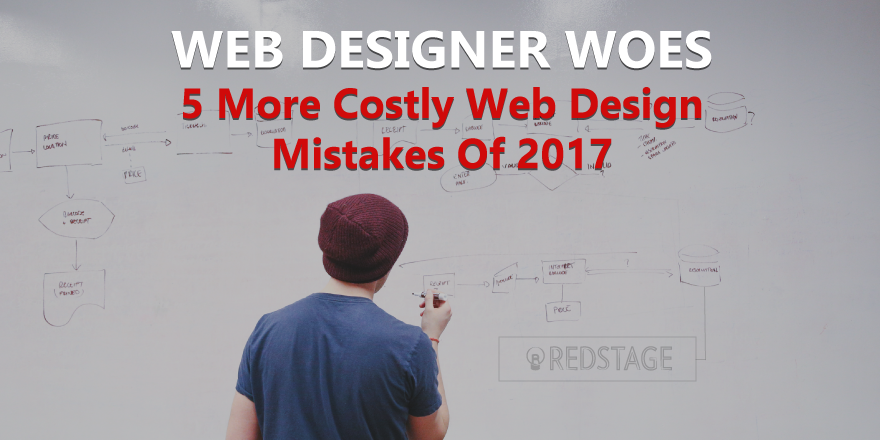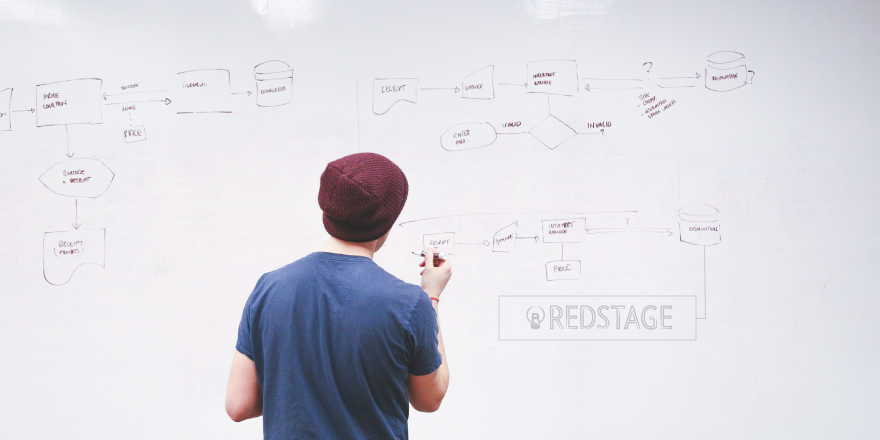
Web Designer Woes: 5 More Costly Web Design Mistakes of 2017

The cornerstone of good UX is simplicity. As Redstage’s Creative Director Adam Piken says, “Don’t assume all your customers understand what a ‘Continue’ button does or what a ‘hamburger’ icon means… especially for eCommerce. Use well-known web design standards and simple, direct language.” If there’s one thing the web designers and developers at Redstage know, it’s that “no-brainers” aren’t always obvious in eCommerce. More often than not, it takes an expert with a critical eye to catch what others cannot (and we’ve got your back!). With this in mind, here’s 5 more costly web design mistakes of 2017:
5. Keep Your Fonts Consistent
It’s one of the most basic elements of good web design. Every site should have 1-2 fonts. One primary or master font for the entire site and a secondary font for links, CTAs, buttons, quotes, banners, and the special stuff. Often, the best solution is to simply find one font that looks good in any size, and use italics or different font weights to make special offers stand out. Keep it simple, or your site’s text will compete for attention and confuse or annoy the customer. Keep it simple. Keep it safe.
4. Click To Enlarge
All too often sites stray from the typical norm of “click to enlarge” and opt for a “zoom” image option that’s tricky, fuzzy, and confusing for users. Stick with the “click” option and make sure the product not only appears in high-definition once enlarged, but that customers can easily exit the enlarged photo intuitively (like with a big “X” or “close” button in the top right corner). Any time someone has trouble exiting the zoom function on your site, you’re creating a barrier between the customer and the checkout. Make this process as easy as possible. It’s UX 101, right?
3. View Our Reviews
Consider using a service like our partners at Yotpo to import your reviews directly from Yelp! This quick feature is easy to use and adds credibility as well as buyer certainty for customers. For your first-time customers, reviews could mean everything. If you’re considering adding reviews, make sure to put them somewhere they’re easily accessible (and make sure they’re good before you go live!). You’d also do well to add a script that hides those zero-star reviews on products that haven’t been reviewed yet. In our experience, it’s always better to have no review than a zero rating, which is a big “Don’t buy this” trigger.
2. Choose A Payment Method
Your items are in their cart… They’re on their way to the checkout… Make it as easy as possible for them to do so. You have all the major credit cards, but do you offer PayPal? What about Amazon Pay, Android Pay, or Apple Pay for those mobile users? Samsung Pay? Money order? Price-plans? Lay-away? Bitcoin? Sorry, but you see my point. Offering a variety of payment methods, online or off, means a better, faster checkout experience for customers, so make sure you optimize for breadth.
1. Would You Like To Checkout As A Guest?
In our last Web Designer Woes article, we mentioned the importance of featuring trustmarks and shipping info at the checkout. This time, we’re diving into something equally if not more important: Guest Checkout. Sites that don’t have guest checkouts are losing customers. If they have to think, or worse, feel like they’re being taken advantage of, they have one foot out the door. It’s that simple. When someone goes to buy something, give them the guest option. You’ll still collect plenty of data on them, but they’ll feel like they’re not being taken advantage of and won’t expect endless forms. This expedited checkout method prevents cart abandonment, and more importantly, speeds up the checkout experience — something that can be a game-changer for the holiday season ahead.
For More Tips, check out the previous post in this series:
Web Designer Woes: 5 Costly Web Design Mistakes of 2017
If you have any questions or tips that aren’t on this list, feel free to mention them in the comments below!



Recent Comments